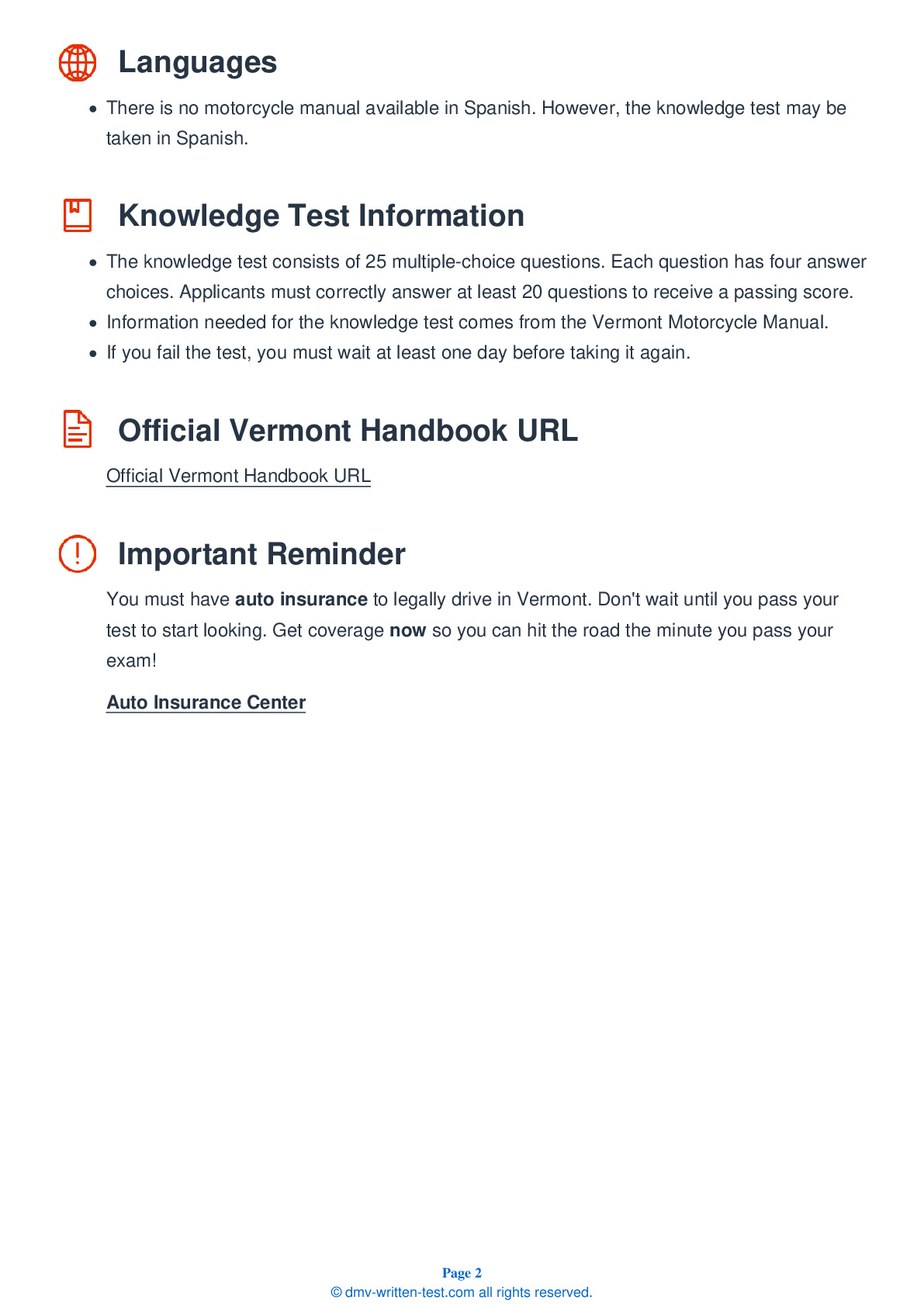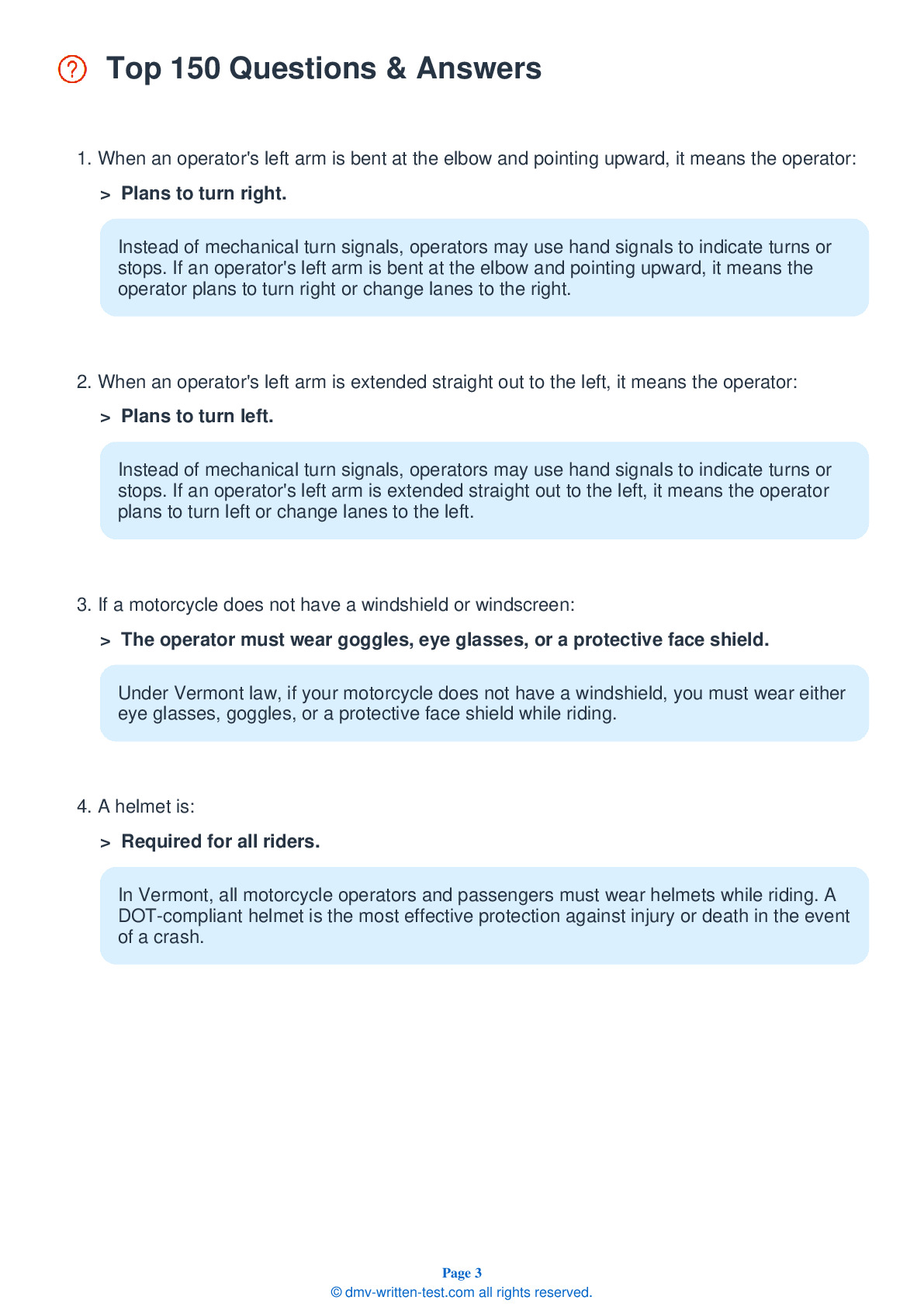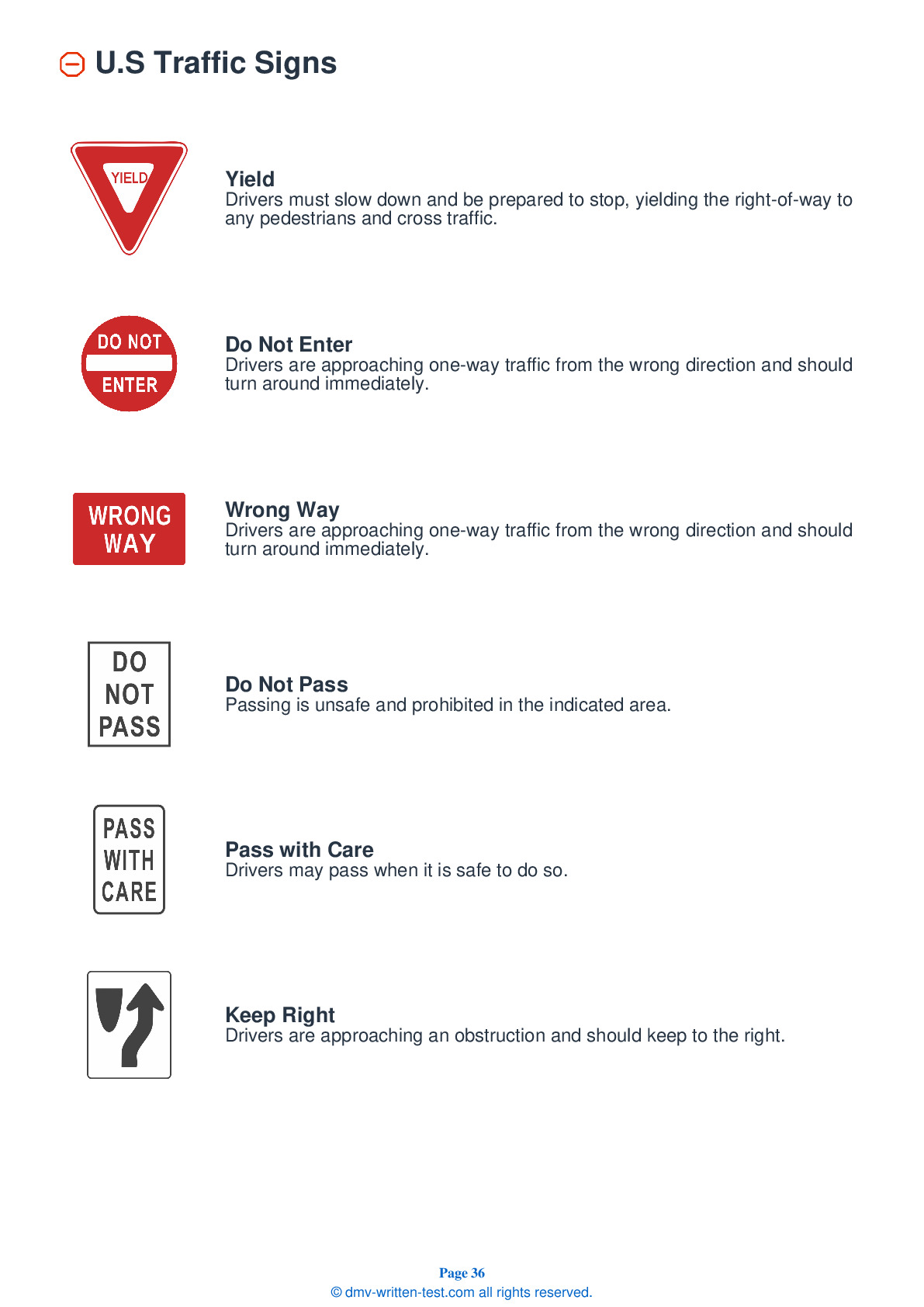2025 Vermont Motorcycle Permit Test 13
The following questions are from real DMV written motorcycle permit tests. These are some of the actual permit questions you will face in Vermont when getting your motorcycle learners permit. Each motorcycle theory practice test question has three answer choices. Select one answer for each question and select "grade this section." You can find this button at the bottom of the drivers license quiz. For a complete list of questions and answers for Vermont please visit https://cheat-sheets.dmv-written-test.com/en/vermont/motorcycle.
Number of Tests
Number of Question
Passing Score
19. If you find your motorcycle being chased by a dog, you should:
Explanation
If you are being chased by a dog, downshift and approach it slowly. Then, as you approach the dog, accelerate and leave it behind.
20. When applying the front brake, you should:
Explanation
To apply the front brake, firmly and smoothly squeeze the brake lever with all four fingers, applying progressively more force.
21. What does this hand signal mean?

Explanation
Instead of or in addition to mechanical turn signals, operators may use hand signals to indicate turns or stops. If an operator's left arm is bent at the elbow and pointing upward, it means the operator plans to turn right or change lanes to the right.
22. A rectangular sign may be a:
Explanation
Signs informing road users of road regulations, such as speed limits, are normally rectangular and colored white with black lettering or symbols. Riders must follow the rules posted on these regulatory signs.
23. Which vest or jacket color would best help you to be seen?
Explanation
Wearing brightly-colored clothing while riding will increase your chances of being seen. Bright oranges, yellows, reds, or greens are best and are preferable to drab or dark colors.
24. When you are being passed by another vehicle, which part of the lane should you ride in?
Explanation
When being passed, it is generally safest to ride in the center portion of your lane. Riding on the side nearest the passing vehicle increases the risk of colliding with them. Riding on the side farthest from the passing vehicle is also dangerous, as it could tempt the driver to re-enter your lane before it is safe to do so.
25. When riding at night you should:
Explanation




